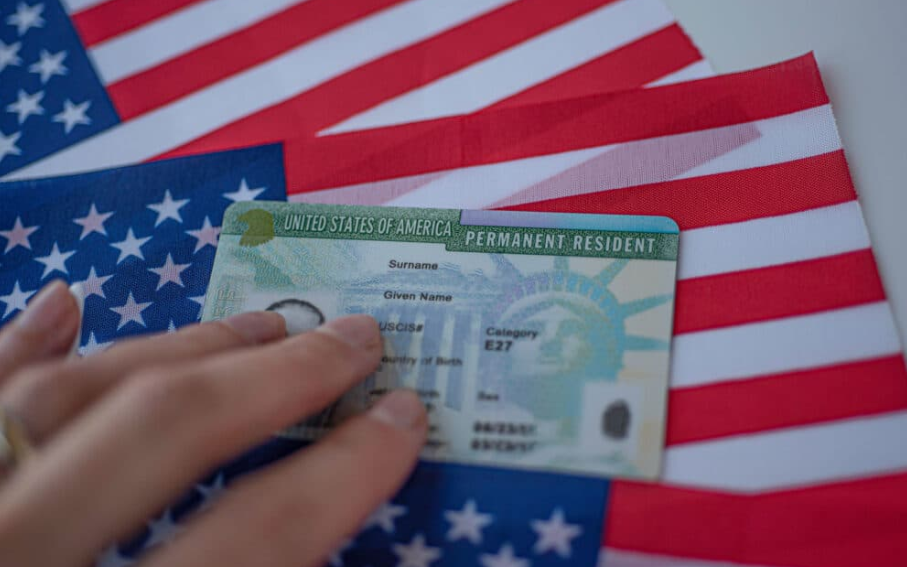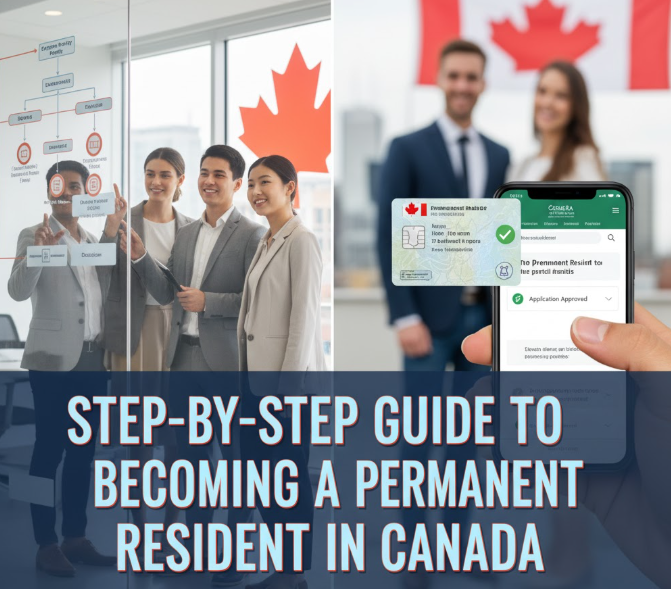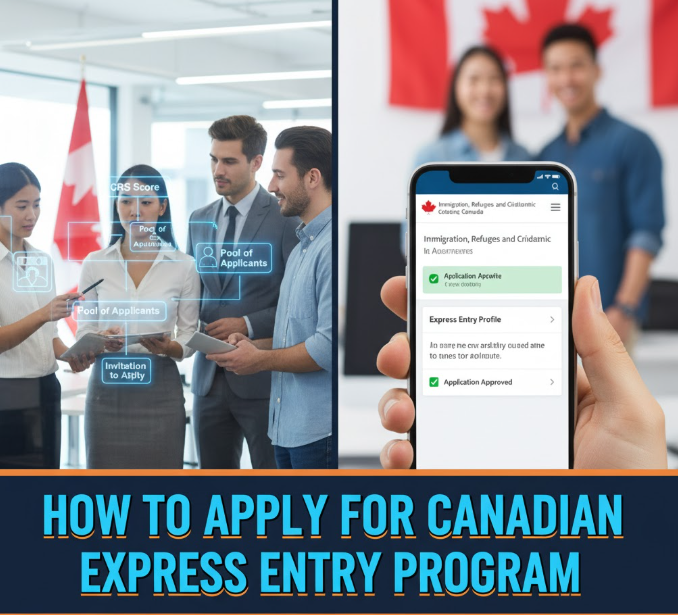Relocating to a new country, and then building a life there is one of the biggest decisions you will ever make. If you dream of living in another country indefinitely, permanent residency is your golden ticket. This status allows you to live, work and have most rights as a citizen — without relinquishing your other nationality.
But what does that actually mean for getting permanent residency? The requirements, forms and waiting periods can be overwhelming during the process. No sweat — this primer provides a step-by-step breakdown of all you need to know. Whether you’re relocating for work, family or simply a change of scene, you’ll know what to expect and how best to prepare for your path toward permanent residency.
What Permanent Residency Really Means
But before we delve into the application process, it is a good idea to be clear on what permanent residency actually grants you. A permanent resident is an individual who has the right to reside in a country permanently, despite not being a citizen. I think of it as in-between status — not just visiting, but not becoming a full citizen.
As green card holder, you have the:
- Go country for as long as you like
- Work at any employer without additional work permits
- Use public health and education services
- Move in and out of the country without restrictions
- Then apply for citizenship (in most places)
- To be accompanied by family members
But it’s often the case that permanent residents cannot vote, have access to some government jobs or get issued a passport from their country of residence. You will retain your initial citizenship and passport.
Picking the Pathway for Your Green Card
It’s also not true that all foreign countries have their own equivalent of Green Card that allows permanent residency. What’s the best alternative for you might depend on your situation, skills and connections. And here are the most common paths:
Family Sponsorship Route
If you have close family members who are already citizens or permanent residents, they may sponsor you. Usually the most rapid way for:
- Spouses and partners
- Dependent children (including adult dependent children in certain countries)
- Parents and grandparents
- Siblings (in certain nations)
A family member is sponsoring you by showing that they can support you financially and promising to help you settle.
Employment-Based Programs
Plenty of countries are hungry for labor. If you have marketable job skills, education, or work experience you may qualify through:
- Employer sponsorship (a firm hires and aids in your immigration)
- Qualifying skilled worker programs (you qualify based on your skills)
- Business investor (You invest or own a business)
- Transfer intra-company (your employer moves you in their foreign branch)
Humanitarian and Refugee Status
People who are fleeing persecution, war or threats to their safety in their native countries can seek protection. This includes:
- Refugee programs
- Asylum applications
- Humanitarian and compassionate grounds
These paths have different needs and protections.
Other Special Programs
Some countries provide special paths such as:
- Diversity lottery systems
- Retirement visas (For those who don’t seek gainful activity, for the elderly with a livelihood)
- Student flows (initial study then transfers to another course)
- Resident transformation (temporary long-term residence)
What You’ll Need: Basic Requirements
Although each country’s rules are different, most permanent residency applications will ask for the same documentation and criteria. Here’s what you should expect:
| Category | You Will Generally Need… |
|---|---|
| Identification | Passport, birth certificate, national identity cards |
| Background Checks | Police clearances from every country you’ve lived in |
| Health | Medical exams, vaccinations and/or chest x-rays, blood tests |
| Financial | Bank statements, job offers or contracts of employment, income-tax records, sponsor details |
| Language Proof | Test results like the IELTS for some countries |
| Education Records | Diplomas and degrees – transcripts may be required which can take time to obtain since they need your institution’s input |
| Relationship Proof | Marriage certificates / photos / proof of living together etc., joint documents in case of family applications |
| Photos | Passport-size photographs meeting specific requirements |
Begin to assemble these documents early — some need several weeks or months to prepare, including police certificates from other countries.
The Road to Application: 7 Critical Phases
Now let’s go through the actual process of applying for permanent residency. The exact actions differ by country, but this general road map is valid in almost every place.
Stage 1: Research and Preparation (2-4 months)
Your first task is to become an expert on how your country of choice handles immigration. This means:
Investigate all your options. Most nations have several permanent residency programs. Read through government-issued immigration websites carefully. Take a look at the eligibility requirements for each program and honestly evaluate which ones you may be eligible to apply.
Calculate your eligibility. Many countries have points-based immigration systems, where you are awarded points based on your age, education, work experience, language ability and any other criteria the country deems crucial as a judge of eligibility for entry. Make use of official online calculators to calculate your score. I don’t recommend applying with fewer points, unless you can boost your profile in some other way before applying.
Understand processing times and costs. Immigration fees are usually between $1,000 and $5,000 USD — or much, much more if you decide to include medical exams, language tests, document translations for government processing and fees and lawyer costs. Application processing times range widely — anywhere from six months to several years, depending on the program and country.
Join online communities. Connect with others who are going through the same proceedings. Forums and social media groups are like gold for this kind of practical advice and real accounts.
-
Want to compare your options? See the benefits of studying in Canada compared to other countries — Click to read
Stage 2: Document Review (2-6 months)
This is the longest part of the process. You have to collate, prepare and organize dozens of documents.
Get your police certificates. You will need criminal background checks from the country of residence for six months or more since your 18th birthday. Some countries do this swiftly; others take months. Start this process immediately.
Complete your medical exams. You have to use approved doctors for immigration medical exams in most countries. Your own doctor isn’t available. These exams screen for infectious diseases and other serious health problems. They range from around $200-500 per person and the results are generally good for 12 months.
Take language tests. If you need, start booking your English or French testing or other language assessments. These tests assess your reading, writing, listening and speaking skills. If you don’t get the scores that you need, you can retake them; each retake costs $250 to $350.
Get educational credentials assessed. Countries generally need the degrees earned abroad to be evaluated by official organizations. This action verifies you are the same level like them. The process takes four to eight weeks and costs $200-300.
Translate documents. All documents that are not in the official language of destination country must be translated by sworn translators. Keep original and translated form.
Organize everything systematically. Convert every document to digital and hard copies. Keep a checklist of what you have, and what’s still needed.

Step 3: Finalize your application (2-4 weeks)
Online application systems are now used by most countries, but some still take paper applications.
Create your online account. Sign up on the official immigration site. Never use third-party websites that offer to apply for you — these are often scams.
Fill out forms carefully. Immigration forms pose an array of questions about your whole life — where you have lived, worked, traveled and who is in your family. Take your time. Even minor errors can mean months of delay for your application.
Upload documents properly. Strictly adhere to file size and format limitation. Label everything clearly. Low quality scans, or incorrect file types will be rejected!
Write required statements. Some require personal statements, letters of explanation, or even employment reference letters. Be honest, detailed, and specific. A generic letter doesn’t do anything for your case.
Double-check everything. Proofread everything in your application at least twice before you send it. Have someone else read it as well. Be sure to check spelling errors, information omissions and contradictory dates.
Step 4: Submit and Pay (1 day)
When everything looks just right, it’s time to send out your application.
Pay government fees. Use approved payment methods only. Keep receipts and transaction confirmations.
Submit your application. Hit that submit button on a weekday during business hours (in case there are technical glitches and you need assistance).
Get your confirmation. You should get an application number or confirmation right away. Save this in more than one place — you will need it to check your status.
Submit biometrics if required. Most of them are fingerprinting and taking photos. You will be told to go to an accepted collection site within 30 days of the time you submit your application.
Stage 5: Wait for Processing (6 months to 3 years)
Now comes the hardest part—waiting. Processing times depend on:
- Which program you applied through
- The numbers of applications being processed by the immigration department
- Completion and clarity of your application
- Random in-depth reviews or interviews selection
During this time:
Check your application status regularly. Check your account weekly to determine whether immigration officers have made an additional request for documents or information. It’s imperative that you respond ASAP to any communications – typically you have just 30 days.
Keep your information updated. If your address, email or phone number changes, you get a new job, or your family situation changes update your application. Not notifying immigration of material changes can lead to refusal.
Maintain your current status. If you’re already in the country on a temporary visa, ensure it will remain valid while your permanent residency is being processed.
Stay patient but persistent. If your application is outside of processing times you can write to immigration and ask for the status. Conduct all correspondence in a courteous and business-like manner.
Step 6: Making up your mind and what happens next (1-2 months)
Eventually, you’ll receive a decision. There are three possible outcomes:
Approval: Congratulations! You’ll be given information about what comes next, which could include:
- Paying a “right of permanent residence fee”
- Mailing your passport for visa stamping
- Arranging a landing appointment or interview
- Signing official documents
Request for evidence: Immigration officers need an explanation or more documents. Respond quickly and thoroughly. This doesn’t mean rejection—it’s normal.
Rejection: If your application is rejected, you will learn why. You may have options to:
- If allowed in that country, appeal the decision
- Reapply after addressing the issues
- Apply through a different program
Stage 7: Arrive and Get a Resident Permit (1 day to 3 months)
If you are approved, the next step is to “land” or officially activate your permanent residence.
Travel to the country. If you are out of the country, you will need to return before your visa expires (typically 6-12 months after approval).
Complete landing procedures. At the border or immigration office, you will:
- Present your documents
- Answer questions about your plans
- Sign official paperwork
- Get your permanent resident card or receive proof that it will be mailed to you
Settle in. Now the real adventure begins! You’ll need to:
- Find housing
- Obtain a social insurance number or social security number
- Open bank accounts
- Get a job or set up business
- Enroll children in school
- Register for healthcare
Country-Specific Considerations
Requirements and procedures vary by country. Here’s a quick look at some popular destinations:
United States (Green Card)
The U.S. provides green cards to family members, workers, through a diversity lottery and refugees and asylees. It’s infamously long, particularly for family-based applications from some countries (up to 10+ years). Employment-based green cards need labor certification that states no qualified American is taking the job.
For comprehensive information on U.S. immigration pathways, visit the official USCIS website.
Canada (Express Entry and Other Programs)
The Express Entry system of Canada is rapid and based on points. Your experience should focus on your work, education, and spoken language abilities. Processing typically takes 6-12 months. Canada also has a Provincial Nominee Programme through which the Provinces choose those with requisite skills.
Australia (Skilled Migration)
Australia is big on skilled workers with jobs on their needs lists. You need a skills assessment to show you are qualified in your occupation and strong English. The younger you are, the more educated and the more experienced: Points.
United Kingdom (Indefinite Leave to Remain)
In the UK you have to live there on temporary permits for 5 years before applying for permanent residency (called indefinite leave to remain). You need to meet a minimum income threshold, pass the “Life in the UK” test and demonstrate English-language proficiency.
European Union Countries
Permanent residency rules vary by EU country, but are generally 5 years of legal residence. Some provide you with “EU Long-term Resident” status, which makes it easier to move around among countries in the European Union.
Mistakes That Get in the Way, or Derail Applications
Learn from others’ errors. Avoid these frequent problems:
Incomplete applications. Even if one document is missing, it can take months to process. Use checklists religiously.
Dishonesty or omissions. Never lie or hide information. Immigration authorities verify everything. Lies will get you banned from here too, just a heads up.
Poor quality documents. Blurry scans, omitted pages and faded documents are rejected. All must be clearly readable and legible.
Missing deadlines. When you receive the request to submit additional information, don’t wait until it’s late. Late replies are typically rejected by the system automatically.
Wrong program. While there are some who might make the argument to apply through a program you don’t technically qualify for, (say at the insistence of an employer) doing so is wasting time and money. Be realistic about your eligibility.
Paying scammers. Only deal with licensed immigration attorneys or consultants. Check credentials carefully. Don’t hand over any money to anyone who “guarantees” your approval or offers to expedite processing courtesy of his “connections.”
Do You Need a Lawyer?
A lot of individuals are successful in their application for permanent residency without the help from a lawyer, especially if it’s an easy case such as spouse sponsorship. But you should hire a licensed immigration lawyer or consultant if:
- The government official handling your case has a complex background (bad immigration history, visa history, crimes, family fraud)
- You’re applying under an investment or business program
- You’re not sure which program to apply through
- You want another set of eyes read through your application before submitting
- English is not your first language, and you can’t get through forms
Licensed professionals charge $2,000-10,000+ (depending on complexity), but they’ll know how to best present your case and avoid costly mistakes.
Caution: The immigration world teems with deceptions. Only work with licensed professionals. In many countries, you can check a lawyer or consultant’s credentials with an official government registry.
Life After Getting Permanent Residency
After you get permanent resident status, your new life starts! But remember:
Maintain your status. You can lose your permanent residence if you:
- Commit serious crimes
- Remain abroad for extended periods of time (residency requirements differ – typically, you might be required to reside in the country for 2-3 years out of every 5)
- Misrepresented facts in your application
Know your obligations. Pay taxes, adhere to laws and satisfy any residency requirements. Many nations stipulate that permanent residents must live in the country for some period of time.
Consider citizenship. Depending on how long you’ve been a permanent resident (usually 3-5 years), you may qualify to become a citizen. This gives you full rights, voting and a passport.
Keep documents safe. You need your permanent resident card. Keep it safe and replace when it’s about to expire (which is typically about every 5-10 years).
Your Path Forward
Getting permanent residency is a marathon not a sprint. The process requires patience, organization and perseverance. Yet millions of people complete these journeys each year and create new lives in countries all around the planet.
Begin by doing your research and finding out what the best options are for you. Be realistic about your skill levels. Gather documents methodically. Fill out applications carefully. Respond promptly to any requests. And think positively while you wait.
Yes, the paperwork is tedious. Yes, the waiting is frustrating. Yes, the costs add up. But the reward — the opportunity to build a permanent home in your chosen country — makes every form, every document, and every hour of preparing your application worthwhile.
Take it one step at a time. The next thing you know, you’ll have that permanent resident card in your hand and will be moving on to the next chapter of your life. The path to PR starts with one step – you may as well take it today!

Frequently Asked Questions
How long does the process take to become a permanent resident?
That timeline differs significantly depending on the country and program. Some skilled worker programs process applications within 6-12 months and family sponsorship can range from 1 year to upwards of 10+ years depending on the country and relationship. This could last 2-4 years, with business investment programs as a potential route. Be sure to confirm processing times on official government sites, which fluctuate regularly.
Can I work while my residency application is being processed?
That depends on your status in the country right now. If you’re already there with a legitimate work permit, you can generally continue working. If you are applying from abroad, you can generally not work until your application has been approved and you have officially landed. Some countries sometimes allow people to work in their country on “open work permits” while they are processing permanent residency.
What if my application for permanent residency is denied?
You will be sent a letter stating why you were unsuccessful. In some countries or situations you can appeal the decision, ask them to review it, or just submit another application after correcting whatever went wrong. You may just have to apply through a different program better suited for your situation.
Must I renounce my current citizenship to become a permanent resident?
No! Permanent residence is not the same as citizenship. As a permanent resident, you retain your original citizenship and passport. You’re just getting the right to live permanently in another country. It’s only if you later try to become a citizen need to consider your current nationality (some countries allow dual citizenship, some do not).
How much money do I need to show for PR?
Financial requirements vary widely. Some require documentation that you can support yourself for 6-12 months without burdening their country (that amount ranges): somewhere between $10,000 – $30,000 per person. Other programs take no account of your finances if you have an offer of a job. The business investor program might have investments of $100,000 up to and more than $1,000,000. Refer to individual program descriptions for actual numbers.
Can I add my family in the application?
You can include your spouse or partner and dependent children with most permanent residency programs. Some even let you add other family members. You do, however, have to declare all your relatives when you fill out the application, even those who won’t immediately immigrate with you. Every additional person ups the cost for medical exams, fees and documentation.
What if my circumstances change while my application is being considered?
You are required to update immigration authorities about major changes like getting married or divorced, having children, moving to a new address, changing jobs, criminal charges and serious illnesses. Most countries have online forms to update your application. If you don’t report big changes, your application may be denied or you could face fraud charges.
Is there any advantage to migrating to another country for studies or work and, later on, obtaining permanent residency?
Yes, in many countries. For instance, international students generally receive more points under skilled worker applications and may be eligible for post-graduation work permits that can eventually lead to permanent residency. Temporary workers make inroads and connections that help their applications. This is known as a “two-step immigration” strategy and it’s become more popular.




